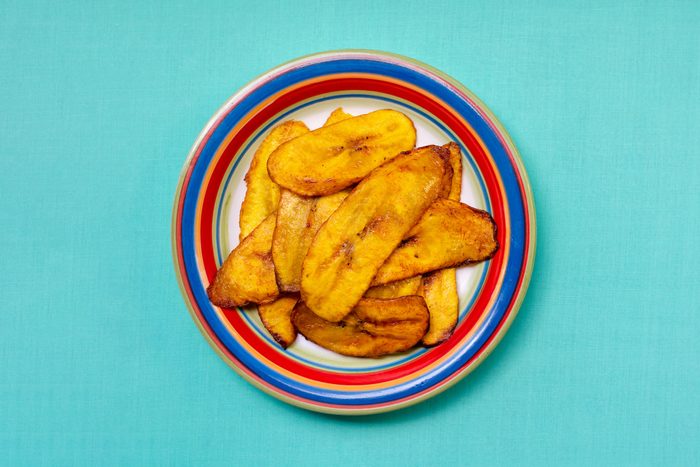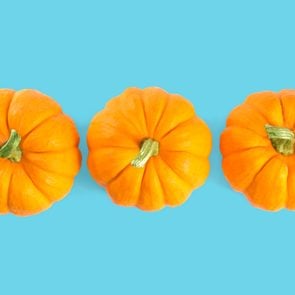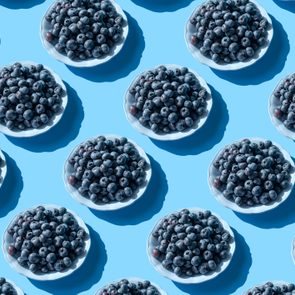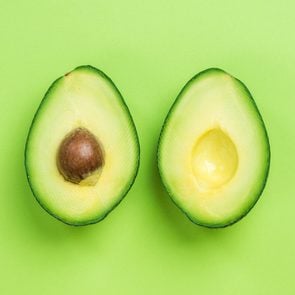What Are Plantains, Exactly?
Updated: Jun. 07, 2023

Go beyond bananas with their lesser-known cousin. Here's what plantains are and how to eat them.
For every unfamiliar fruit (yellow watermelon, anyone?), there’s an old standby that pretty much everyone has eaten. But while you may know a handful of ways to use a banana—eaten from the peel, chopped over cereal or mixed into a warm, sweet bread among them—you may find yourself struggling to identify one when also presented with a plantain. Besides being a banana lookalike, though, what are plantains?
A tropical food commonly confused with its smaller, sweeter cousin (the banana you know and love), the plantain has charm and versatility all its own. The fruit works well in both sweet and savory dishes, and boy is it delicious. “Plantains are the lifeblood in many indigenous communities around the world,” says chef Tonya Thomas, co-owner of The H3irloom Food Group in Baltimore, Maryland. “In many African countries, plantains are boiled, mashed and cooked with milk or coconut milk to make a creamy porridge.”
But that’s not even close to all the ways you can use these fruits. “In Latin American and Caribbean cuisines, green plantains are sliced, fried, flattened and fried again to make tostones,” says Tonya’s partner, chef David Thomas. “Ripe plantains are sliced and fried until caramelized to make maduros. The traditional Puerto Rican dish mofungo is made by mashing fried green plantains with garlic, salt and olive oil.”
Plantains have a high starch content and firm texture that makes them ideal for cooking in myriad ways, from boiling to frying to baking to grilling. Not only do they make for one of the best snacks you can eat (Chifles Plantain Chips rank as Florida’s favorite), but they’re also jam-packed with nutrients like vitamins A and C, potassium and dietary fiber. Here are the food facts you need to know about plantains before trying them for the first time.
Get Reader’s Digest’s Read Up newsletter for more food, humor, cleaning, travel, tech and fun facts all week long.
What are plantains?
Scientifically speaking, plantains are a berry in the Musaceae family, which includes various species of bananas and plantains. In botany, berries are fleshy fruits that derive from a single plant ovary, with seeds embedded in the pulp. While you might not notice visible seeds in the banana you eat each day, or in plantains for that matter, they are most certainly there—they’re just incredibly small and not fully developed.
Like bananas, plantains grow in clusters (or “hands”), each containing dozens of individual fruits. The two foods share other similarities, like their general shape and the fact that they originate from Southeast Asia but are grown all over the world.
But don’t assume these lookalikes are actually the same: Plantains are larger than bananas, with thick peels that are more difficult to remove. Their firm flesh is more starchy than sweet, and when their peels are green or yellow, plantains are nearly unpalatable raw.
What do plantains taste like?
While unripe plantains are too starchy to eat raw, they’re wonderful when cooked. Think of them almost like a tropical potato, which you can serve mashed, baked, boiled or fried. When eaten this way, the flavor is mild and starch-forward, making them a great side dish for more flavorful entrees.
As a plantain ripens, its peel undergoes a metamorphosis, turning a vibrant yellow or even black. With this transformation comes a softer texture and increased sweetness. Ripe plantains become the stars of desserts and are fashioned into delightfully sweet snacks.
Bananas vs. plantains: What’s the difference?
The most obvious difference between bananas and plantains is size. Plantains are much larger than bananas, growing up to one foot in length.
Their peels offer more dissimilarities: Banana peels are thin and soften considerably as they ripen, while plantain peels are thicker and tougher, even when the fruit is ripe. When plantains are green, you’ll most certainly need a knife to cut through their fibrous exterior, and it may take some work to separate the peel from the fruit.
You won’t find people eating the fruits in the same way either. Though you can cook with bananas, most people eat them raw, once they’ve turned yellow and softened, indicating the starches in the fruit have broken down into simple sugars. Plantains are far starchier, giving them a firmer, denser texture that’s more suitable for cooking (almost like a sweet potato). They’re also considerably less sweet than bananas, even when ripe.
Though bananas grow in tropical regions, they’re widely consumed all over the world and are regularly used in Western recipes, including cakes, pies and quick breads. Plantains have yet to achieve the same global popularity, but they’re an indispensable ingredient in tropical climates, featuring prominently in African, Caribbean and Latin American cuisines.
How do you eat plantains?
Because of their high starch content and dense texture, plantains are best cooked before eating. So, what are plantains good in? More meals than you may imagine! Sweet or savory, plantain dishes are a delight. The preparation suggestions below offer tasty ways to eat plantains.
Fried
“This is a classic and versatile way to prepare plantains,” says Tonya. “Slice and fry them in oil until they turn golden and slightly caramelized. Fried plantains can be served as a side dish, snack or even as a dessert with a sprinkle of cinnamon and a drizzle of honey.”
Though leaving them au naturale is the most popular way to fry plantains, she also suggests trying them in fritters. “Mash ripe plantains and mix them with flour and spices and other ingredients to make a batter,” she says. “Drop spoonfuls of the batter into hot oil and fry until they become golden brown. These fritters are crispy on the outside and soft on the inside.”
Roasted
For a healthier alternative to deep-frying, try roasting your plantains instead. Peel them, cut them into pieces, toss in just enough cooking oil or melted butter to coat and spread them onto an ungreased baking sheet or roasting pan. Bake in a 400-degree oven until tender and golden brown. Depending on the size of the pieces, this can take anywhere from 15 to 30 minutes.
Another oven-friendly option: Create what will become your new favorite snack by whipping up some homemade plantain chips. Slice the plantains thinly, season with salt, spices or herbs, if you like, and bake them until they’re crispy.
Boiled
“Plantains can be boiled until tender and then mashed or served as a side dish,” says David. Boil pieces of peeled plantains in salted water until they are fork tender, which can take anywhere from 10 to 20 minutes, depending on the size. Once drained, you can serve them as is or mashed.
“In many African countries, plantains are boiled, mashed and cooked with milk or coconut milk to make a creamy porridge,” he says. “It is often flavored with spices like cinnamon, nutmeg or vanilla.”
Stewed
Not only are plantains delicious on their own, but they also play extraordinarily well with others. “Plantains can be added to stews, curries and other savory dishes to add a unique flavor and texture,” says Tonya. “They can be cooked until soft and absorb the flavors of the dish.”
How do you shop for plantains?
You’ll find plantains in the produce section of most major supermarkets. When shopping for the fruit, keep the dish you’re making in mind. A good recipe will note whether you need to use ripe (yellow or black) or unripe (green) plantains.
Ignore any minor blemishes or light discolorations on the peels. Those are perfectly normal and have no effect on the quality of the plantain. That said, avoid any plantains with large gashes, bruises or mold.
Keep in mind that plantains take longer to ripen than bananas (though there are tricks for making those bananas last longer). So if you buy green plantains today, they won’t be black tomorrow. If you’re making a dish that needs ripe plantains, buy yellow ones that are covered with a considerable number of black spots.
How do you store plantains?
You can store unripe plantains on the counter at room temperature for days, or even weeks, before you need to use them. If you’d like to accelerate the ripening process, store them inside a cloth sack or paper bag to trap the ethylene gas plantains emit as they ripen. And heads up: Ethylene gas can ripen other fruits and vegetables as well, so if you’ve got some underripe fruit you want to eat soon, store the produce in the bag, and let the plantains work their magic.
Once your plantains are ripe, you can store them in the refrigerator to slow down the ripening process until you’re ready to use them. Tie them up in a bag (cloth, paper or plastic) or place them in a resealable container to help prevent moisture loss. The skins will likely darken in the cold, but the fruit inside will remain unchanged.
For long-term storage, turn to your freezer. Place peeled plantains in a zip-top freezer or vacuum-sealed bag, then stash them away in the cold. Properly sealed to avoid freezer burn, they can last for several months. When you’re ready to use them, simply move them to the refrigerator or leave them out on the counter until they’re completely thawed.
Now that you can answer “What are plantains?” like a total pro, it’s time to take your food knowledge up a notch. Find out whether tomatoes and cucumbers are fruits or veggies.
Sources:
- Tonya and David Thomas, chefs and co-owners of The H3irloom Food Group in Baltimore



